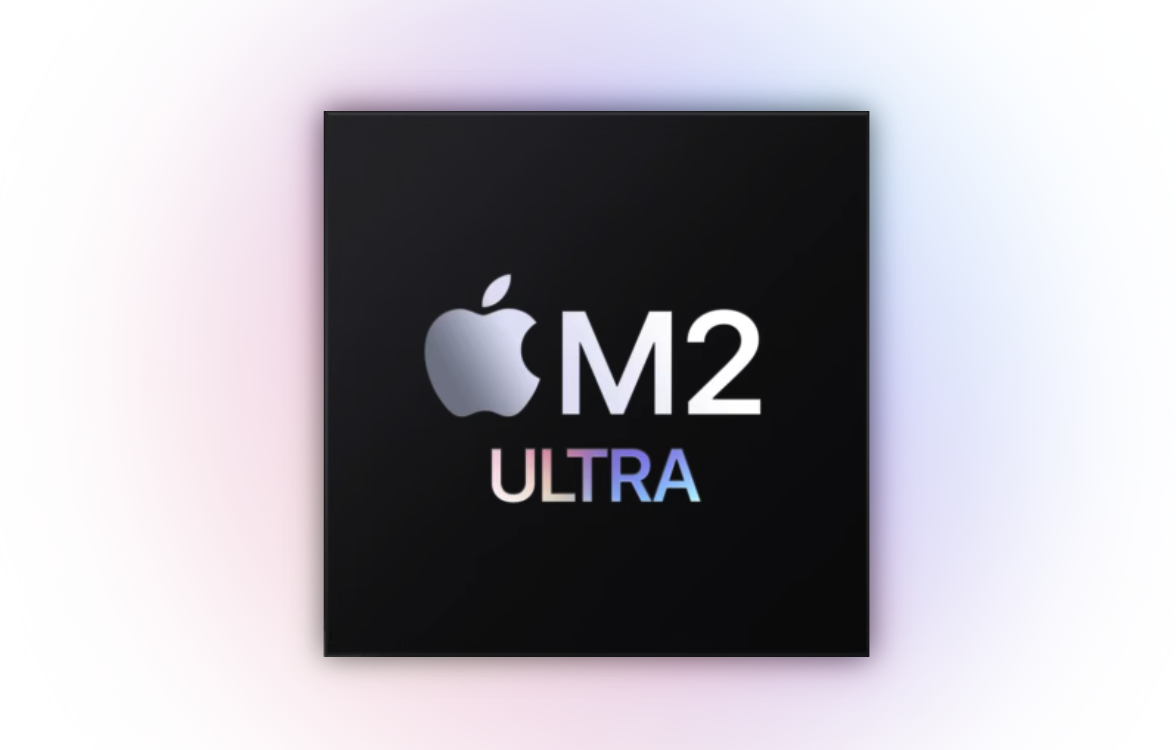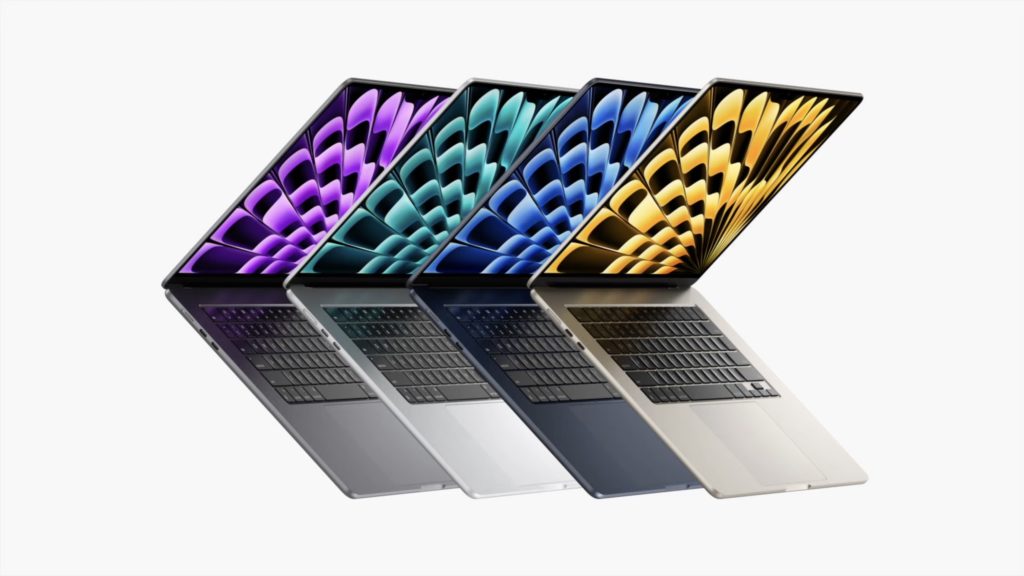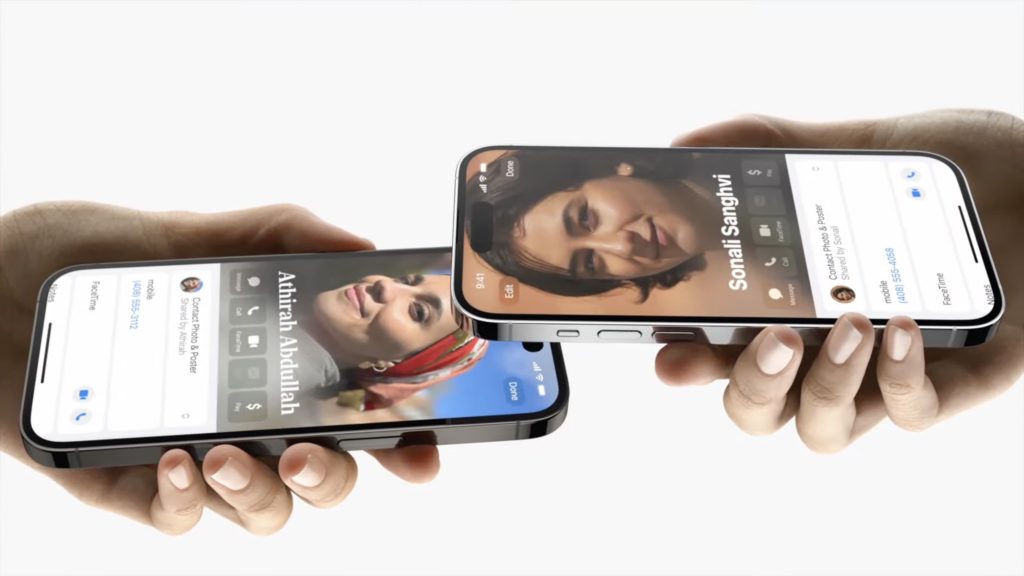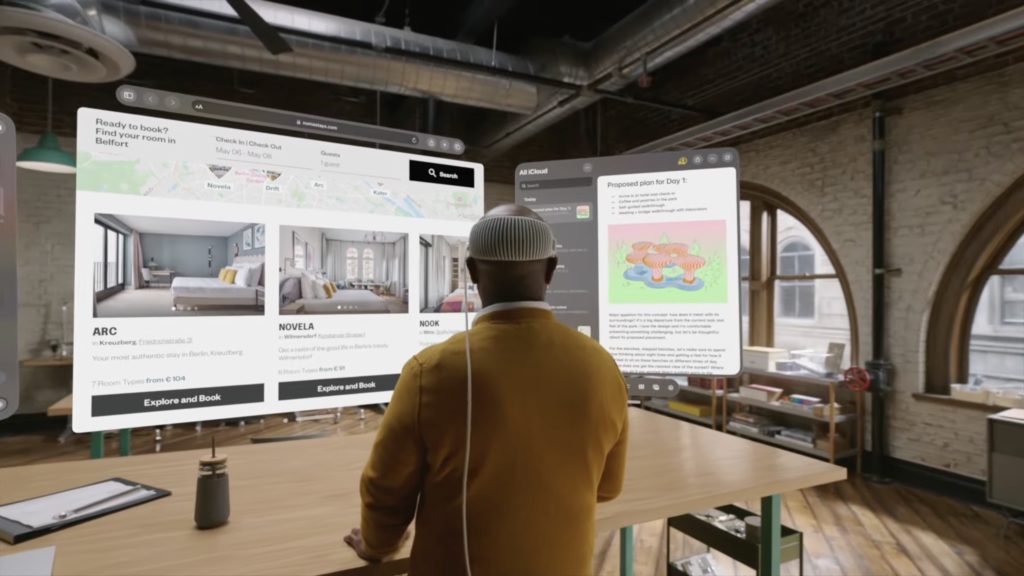
Select Highlights from WWDC 2023
(2023-06-10 Cupertino, CA by Jake Bourke and Cirina Catania) Apple’s annual Worldwide Developers Conference generated plenty of buzz as the company took to the stage to announce several products, updates, and innovations coming to Apple’s ecosystem of hardware and software. During the highly-produced 2-hour event, Apple unveiled an array of new products including cutting-edge Mac computers showcasing the newest M2 Ultra chipset, as well as new software features focusing on quality-of-life improvements, all coming to iOS 17 and more. And of course, the long-rumored announcement that just about everyone was anticipating – Apple’s first step into the experimental world of “spatial computing” with the introduction of the Apple Vision Pro headset.
MacBook Air 15″
Apple CEO, Tim Cook kicked of the event with the announcement of the MacBook Air 15. Powered by the M2 chip, it’s touted as the “world’s thinnest 15-inch laptop” with an advertised thickness of 11.5mm. With the unveiling of the MacBook Air 15’s starting price of $1299, the previous MacBook Air 13 received a price drop of $100, bringing down its cost to $1099.

Mac Studio, Mac Pro & The M2 Ultra Chip
The newest iteration of Mac Studio comes with the latest in Apple silicon, promising a groundbreaking increase in performance thanks to the M2 Max. However, that performance is elevated even further with the introduction of the M2 Ultra, Apple’s most powerful chipset, combining two M2 Max chips to create a memory threshold of 192GB.
The Mac Pro, now transitioning to Apple silicon (and thus finally marking Apple leaving behind intel-based hardware for good), takes advantage of the M2 Ultra’s immense boost in performance in addition to PCIe expansion with six open PCIe Gen 4 slots.
iOS 17, iPadOS 17 and watchOS 10
Apple promises several quality-of-life improvements to the iPhone, iPad, and Apple Watch, with the overlapping theme of these updates revolving around personalization, safety, and general ease of use.
Contact Posters breathe new life into incoming calls, letting users express themselves with customized photos or Memojis.
Live Voicemail displays real-time audio transcriptions as someone leaves a voicemail, allowing users to answer while the caller leaves their message.
NameDrop lets users share contact information with each other via AirDrop.

FaceTime also now supports video and audio messages, and thanks to the power of the iPhone’s Continuity Camera feature, FaceTime calls can now be held on the AppleTV.
Messages has received a significant visual upgrade, with iMessage apps now being displayed in an expendable menu, giving it a sleeker design.
The app also introduces Check In, a safety feature that notifies a trusted contact (whether it’s a family member or close friend) if the user has safely reached a destination.
Exclusive to iPadOS is the ability to customize and stylize the lock screen, choosing from a selection of photos, personalizable fonts, and a sizable collection of widgets.
Other new iPadOS features include enhanced interactivity with PDF files thanks to machine learning, and the ability to display and interact with widgets on the home screen (for example, playing music and checking email).
Widgets are also a prime component of watchOS 10, with Apple showcasing a new Smart Stack feature that helps display widgets and other apps when needed.
With a new interface design that utilizes more of the Apple Watch’s display, watchOS 10 promises to deliver information at a simple glance, improving navigation, usability, and compatibility between Apple Watch and Apple’s many other devices.

Apple Vision Pro: Apple’s first spatial computer
The Apple Vision Pro is Apple’s contribution to the VR and AR headset markets currently spearheaded by companies such as Meta, Microsoft, and HTC.
Though marketed as primarily an augmented reality computer, the Vision Pro can envelop the user in an immersive virtual environment with a simple dial twist. Unlike its competitors, however, the Vision Pro prides itself on being a productivity and lifestyle device, as opposed to purely committing to entertainment and gaming (it doesn’t even use controllers to navigate its UI).
Thanks to its unique use of Apple silicon, which includes an M2 chip and a new proprietary ‘R1’ chip (which processes inputs from 5 sensors, 12 cameras, and 6 microphones to ensure a seamless, lag-free experience), the Vision Pro has unparalleled compatibility with Apple devices and accessories such as the magic keyboard and trackpad. It even allows users to ‘detach’ the screen of their MacBook computers and enlarge them in the virtual space. Furthermore, its visionOS, which is built using iOS frameworks, promises compatibility with countless iPhone and iPad apps from the App Store, creating a truly connected ecosystem of Apple’s products.
However, coming in at a price tag of $3,500, it remains to be seen just how widely adopted this new ‘magical’ device will be.
WATCH THE FULL KEYNOTE HERE: